Low profile tire
Difference Between Low Profile Tires & Regular Tires | Park Muffler Edmonton Sherwood Park
- July 21, 2021
- By Park Muffler
- In Blog, Tires
Back in the late 60’s, the first high-performance low-profile tire was created and became a quick favourite of BMW and Porsche owners. Nowadays, these tires have crossed over from the world of auto sports into the mainstream market. From Honda Accords to Audis, low-profile tires are becoming a popular choice amongst regular vehicle owners.
Not all tires are created equal and this is no exception for the low-profile tire. If you are considering having these tires installed on your vehicle, it’s important to understand the difference between low-profile tires and regular tires.
Have you been considering getting low-profile tires for your car? Keep reading to find out what they are as well as the pros and cons of having them installed.
Low-Profile Tires vs Regular Tires
Every tire features a code on the sidewall that displays the tire’s aspect ratio.![]() This is the ratio of the width of the tire to its height. Low-profile tires have a lower aspect ratio and shorter sidewall. Alternatively, regular tires have a higher aspect ratio and taller sidewall.
This is the ratio of the width of the tire to its height. Low-profile tires have a lower aspect ratio and shorter sidewall. Alternatively, regular tires have a higher aspect ratio and taller sidewall.
If you were to look at the sidewall of your tires you may see numbers such as P215/65 R15. The “R” number refers to your rim size, the “P” indicates that your vehicle is a passenger vehicle, and the number following it is the tire section width. The number following the slash, in this case, the number 65, shows that the height of the tire is 65% of the width. If a tire has a 50 aspect ratio of less, it is usually considered to be a low-profile tire. The narrower sidewall and larger wheel tend to give the tires a sportier look.
Apart from having a sportier look, there are advantages and disadvantages to having low-profile tires.
The Advantages of Low-Profile Tires
From a driving point of view, low-profile tires improve the handling of your vehicle while driving at higher speeds.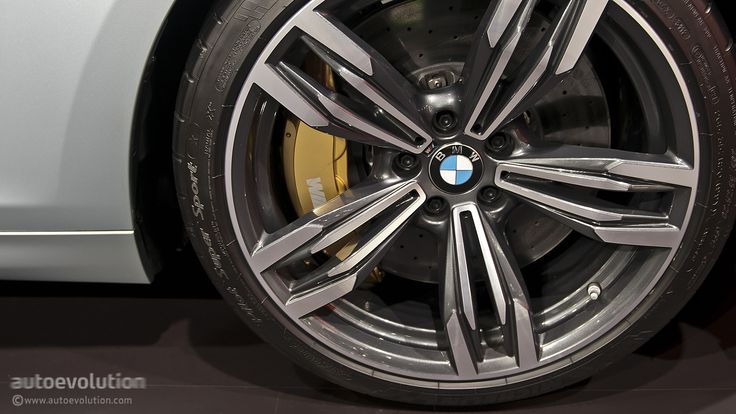 Their increased width means that they can better grip the pavement and respond to cornering. Low-profile tires also tend to have bigger rims meaning that your vehicle can accommodate bigger brakes, allowing you to stop more quickly.
Their increased width means that they can better grip the pavement and respond to cornering. Low-profile tires also tend to have bigger rims meaning that your vehicle can accommodate bigger brakes, allowing you to stop more quickly.
Here are a few other advantages to using low-profile tires:
- Improved Handling: The stiffer sidewalls of a low-profile tire combined with the tires’ larger contact area leads to increased grip and better wheel response
- Increased Fuel Efficiency: These stiff sidewalls, combined with simple tread patterns, results in low-profile tires having lower rolling resistance which creates better fuel economy
- Better Braking: Larger rims are needed to compensate for the less space low-profile tires take, which means that larger braking hardware can be installed. This gives you more stopping power
- Appearance: Overall, low-profile tires look fantastic! However, their aesthetic appeal depends entirely on your personal preferences and the style of your vehicle
The Disadvantages of Low-Profile Tires
Some cars are designed to run on low-profile tires and others are not.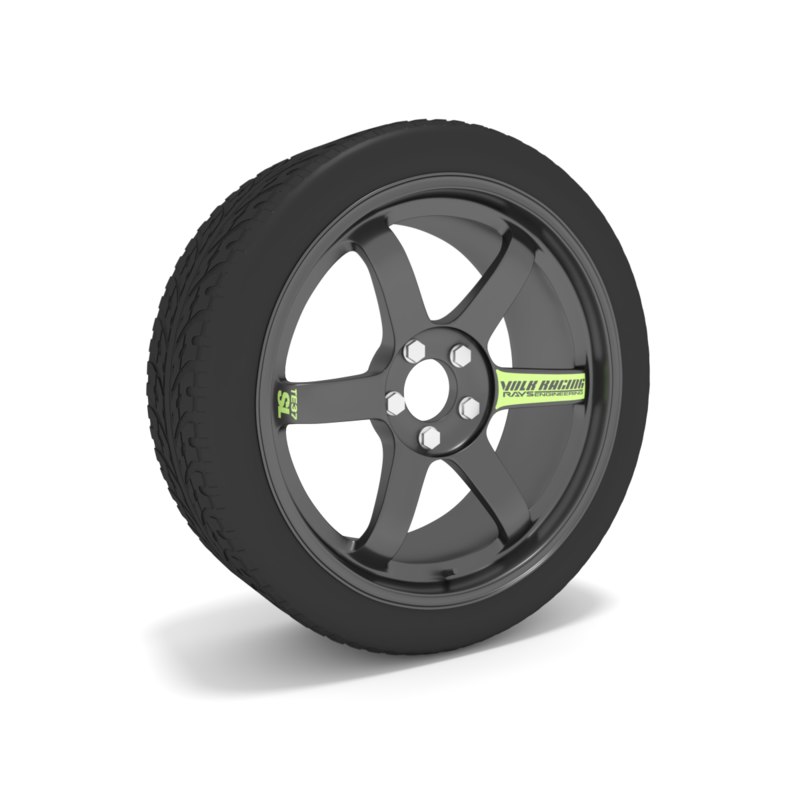 If your vehicle is not designed to accommodate these tires, you could be sacrificing its stability.
If your vehicle is not designed to accommodate these tires, you could be sacrificing its stability.
Low-profile tires can often lead to a rougher ride where you feel every irregularity and bump on the surface of the road. Both the sidewalls and rims are more likely to become damaged due to road conditions.
Overall, low-profile tires are not recommended if you live in a snowy climate due to their poor gripping capabilities on snow surfaces.
Here are a few other disadvantages to running low-profile tires:
- Bumpier Ride: Low-profile tires put less space between your vehicle and the road, so your suspension system is left responsible for absorbing the shock. However, you can configure your suspension system for low-profile tires and eliminate the roughness, noise, and potential damage
- Wheel Damage: Low-profile tires offer much less cushion between your wheels and your rims as well as the road.
 Hitting a pothole with regular tires can be uncomfortable but hitting them a low-profile tire can cause significant damage from a bent rim to a punctured tire
Hitting a pothole with regular tires can be uncomfortable but hitting them a low-profile tire can cause significant damage from a bent rim to a punctured tire - Deflation: While low-profile tires don’t necessarily go flat more often than regular tires, they are known to deflate more quickly if you do have a flat tire. They require less air so there’s less air to lose if the tire becomes punctured.
- Poor Grip on Irregular Surfaces: Low-profile tires are not designed to perform on irregular surfaces due to their simple treads. Gravel roads, snow, and ice can all be problematic
Should I Put Low-Profile Tires On My Vehicle?
Now that you know the advantages and disadvantages of low-profile tires, as well as how they differ from regular tires, you’re probably still wondering if you should have them installed on your vehicle.
From a practical viewpoint, low-profile tires are not an ideal choice for most drivers.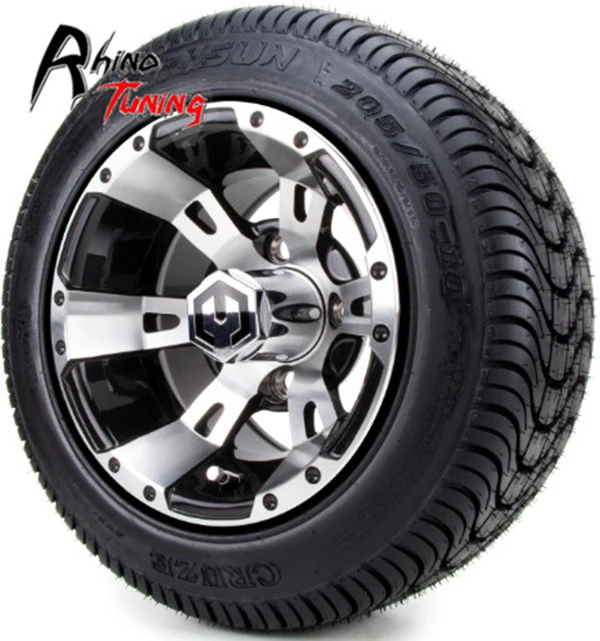 Most of us drive at controlled speeds or on highways that are built for high speeds in cars with regular tires. During our day-to-day lives, it’s unlikely that our commute involves sprawling stretches of beautifully paved roads.
Most of us drive at controlled speeds or on highways that are built for high speeds in cars with regular tires. During our day-to-day lives, it’s unlikely that our commute involves sprawling stretches of beautifully paved roads.
However, if you own or are looking to own a leisure vehicle for Sunday road trips or a twisting adventure through the nearest mountain range, low-profile tires are perfect for maximizing your driving experience!
When you are considering putting low-profile tires on your vehicle, look at where you will be driving and what the road conditions are like. If everything lines up and you can easily accommodate low-profile tires, go for it!
How Low Can You Go?
Tires have a huge impact on how your vehicle drives, including traction, handling, fuel economy, and safety. Park Muffler is dedicated to helping you get the most of your vehicle – especially when it comes to tires. Our team can help with their many years of experience in all aspects of tire care.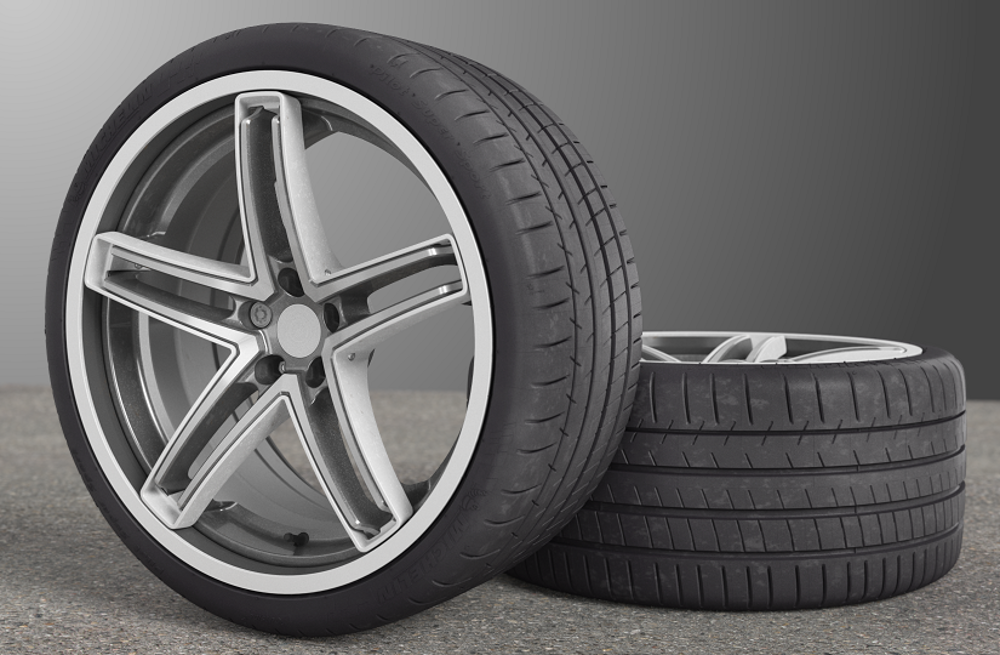
If you’re still curious about whether or not your vehicle could benefit from low-profile tires, don’t hesitate to contact us today! Our expert team of technicians can help guide you through ensuring that your car operates at peak performance while having the look you’ve been dreaming of. Let’s chat!
Low Profile Tires
Low Profile Tire Sizes for 13" Wheels
21" Tire Diameter
215/50R13 = 21.5X8.5R13
225/45R13 = 21x8.9R13
225/50R13 = 21.9x8.9R13
255/40R13 = 21x10R13
Low Profile Tire Sizes for 14" Wheels
22" Tire Diameter
205/50R14 = 22.1x8.1R14
225/50R14 = 22.9x8.9R14
Low Profile Tire Sizes for 15" Wheels
21" Tire Diameter
165/50R15 = 21.5X6.5R15
195/45R15 = 21.9x7.7R15
22" Tire Diameter
195/50R15 = 22.7x7.7R15
22X8R15
245/40R15 = 22.7X9.6R15
275/35R15 = 22.6x10.8R15
23" Tire Diameter
205/50R15 = 23.1x8.1R15
225/45R15 = 23x8.

9R15
225/50R15 = 23.9x8.9R15
295/35R15 = 23.1X11.6R15
24" Tire Diameter
235/50R15 = 24.3x9.3R15
245/50R15 = 24.6x9.6R15
345/35R15 = 24.5x13.6R15
25" Tire Diameter
265/50R15 = 25.4X10.4R15
275/50R15 = 25.8x10.8R15
26" Tire Diameter
26X11.5R15
295/50R15 = 26.6x11.6R15
27" Tire Diameter
325/50R15 = 27.8x12.8R15
28" Tire Diameter
28X13.5R15
29" Tire Diameter
29X15.5R15
29X18R15
29X18.5R15
31" Tire Diameter
31X16.5R15
31X18R15
31X18.5R15
32" Tire Diameter
32X17.5R15
32X18.5R15
33" Tire Diameter
33X19.5R15
33X21.5R15
Low Profile Tire Sizes for 16" Wheels
22" Tire Diameter
175/50R16 = 22.9x6.9R16
195/40R16 = 22.1x7.7R16
195/45R16 = 22.9x7.7R16
205/40R16 = 22.5x8.1R16
215/35R16 = 21.9x8.5R16
215/40R16 = 22.8x8.5R16
23" Tire Diameter
185/50R16 = 23.

3X7.3R16
195/50R16 = 23.7x7.7R16
205/45R16 = 23.3x8.1R16
215/45R16 = 23.6x8.5R16
24" Tire Diameter
205/50R16 = 24.1x8.1R16
215/50R16 = 24.5X8.5R16
225/45R16 = 24x8.9R16
225/50R16 = 24.9x8.9R16
245/45R16 = 24.7x9.6R16
25" Tire Diameter
245/50R16 = 25.6x9.6R16
265/45R16 = 25.4X10.4R16
275/45R16 = 25.7x10.8R16
315/40R16 = 25.9X12.4R16
26" Tire Diameter
255/50R16 = 26x10R16
26X11.5R16
27" Tire Diameter
295/50R16 = 27.6x11.6R16
355/40R16 = 27.2X14R16
Low Profile Tire Sizes for 16.5" Wheels
Low Profile Tire Sizes for 17" Wheels
23" Tire Diameter
195/40R17 = 23.1x7.7R17
195/45R17 = 23.9x7.7R17
205/40R17 = 23.5x8.1R17
215/35R17 = 22.9x8.5R17
215/40R17 = 23.8x8.5R17
225/35R17 = 23.2x8.9R17
245/35R17 = 23.8x9.6R17
24" Tire Diameter
205/45R17 = 24.3x8.1R17
215/45R17 = 24.6x8.5R17
225/40R17 = 24.
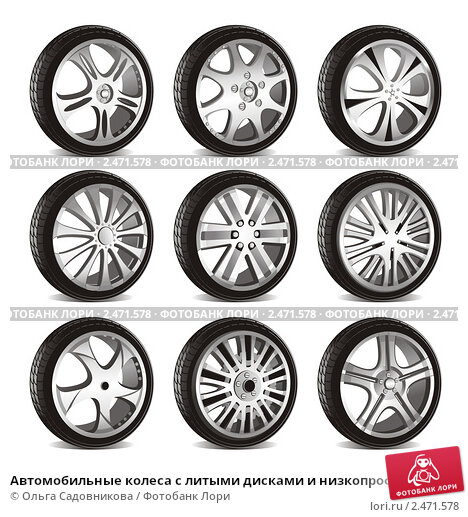
1x8.9R17
235/40R17 = 24.4x9.3R17
245/40R17 = 24.7x9.6R17
275/35R17 = 24.6x10.8R17
25" Tire Diameter
205/50R17 = 25.1x8.1R17
215/50R17 = 25.5X8.5R17
225/45R17 = 25x8.9R17
225/50R17 = 25.9x8.9R17
235/45R17 = 25.3x9.3R17
245/45R17 = 25.7x9.6R17
255/40R17 = 25x10R17
265/40R17 = 25.3x10.4R17
275/40R17 = 25.7x10.8R17
295/35R17 = 25.1x11.6R17
315/35R17 = 25.7x12.4R17
26" Tire Diameter
235/50R17 = 26.3x9.3R17
245/50R17 = 26.6x9.6R17
255/45R17 = 26x10R17
26X11.5R17
285/40R17 = 26x11.2R17
295/40R17 = 26.3x11.6R17
335/35R17 = 26.2x13.2R17
27" Tire Diameter
255/50R17 = 27x10R17
275/50R17 = 27.8X10.8R17
305/45R17 = 27.8X12R17
345/40R17 = 27.9x13.6R17
Low Profile Tire Sizes for 18" Wheels
23" Tire Diameter
215/35R18 = 23.9x8.5R18
24" Tire Diameter
205/40R18 = 24.5x8.1R18
215/40R18 = 24.8x8.5R18
225/35R18 = 24.
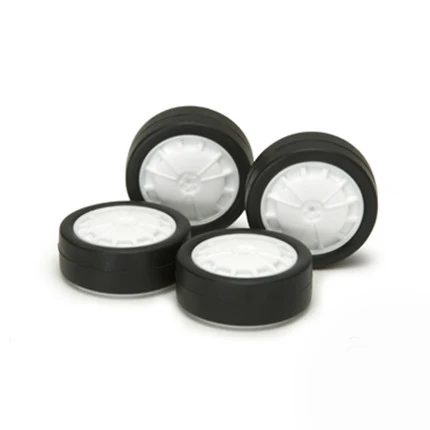
2x8.9R18
235/35R18 = 24.5x9.3R18
245/35R18 = 24.8x9.6R18
285/30R18 = 24.7x11.2R18
25" Tire Diameter
215/45R18 = 25.6x8.5R18
225/40R18 = 25.1x8.9R18
235/40R18 = 25.4x9.3R18
245/40R18 = 25.7x9.6R18
255/35R18 = 25x10R18
265/35R18 = 25.3x10.4R18
275/35R18 = 25.6x10.8R18
285/35R18 = 25.9x11.2R18
295/30R18 = 25x11.6R18
305/30R18 = 25.2x12R18
315/30R18 = 25.4x12.4R18
335/30R18 = 25.9x13.2R18
26" Tire Diameter
215/50R18 = 26.5X8.5R18
225/45R18 = 26x8.9R18
225/50R18 = 26.9x8.9R18
235/45R18 = 26.3x9.3R18
245/45R18 = 26.7x9.6R18
255/40R18 = 26x10R18
26X12R18
265/40R18 = 26.3x10.4R18
275/40R18 = 26.7x10.8R18
295/35R18 = 26.1x11.6R18
305/35R18 = 26.4x12R18
315/35R18 = 26.7x12.4R18
345/30R18 = 26.1x13.6R18
27" Tire Diameter
235/50R18 = 27.3x9.3R18
245/50R18 = 27.6x9.6R18
255/45R18 = 27x10R18
265/45R18 = 27.4x10.4R18
275/45R18 = 27.

7x10.8R18
285/40R18 = 27x11.2R18
295/40R18 = 27.3x11.6R18
305/40R18 = 27.6X12R18
315/40R18 = 27.9x12.4R18
325/35R18 = 27x12.8R18
345/35R18 = 27.5x13.6R18
28" Tire Diameter
255/50R18 = 28x10R18
265/50R18 = 28.4X10.4R18
285/45R18 = 28.1x11.2R18
295/45R18 = 28.5x11.6R18
305/45R18 = 28.8X12R18
29" Tire Diameter
285/50R18 = 29.2x11.2R18
325/45R18 = 29.5X12.8R18
Low Profile Tire Sizes for 19" Wheels
24" Tire Diameter
215/35R19 = 24.9x8.5R19
235/30R19 = 24.6x9.3R19
245/30R19 = 24.8x9.6R19
295/25R19 = 24.8X11.6R19
25" Tire Diameter
225/35R19 = 25.2x8.9R19
235/35R19 = 25.5x9.3R19
245/35R19 = 25.8x9.6R19
255/30R19 = 25x10R19
265/30R19 = 25.3x10.4R19
275/30R19 = 25.5x10.8R19
285/30R19 = 25.7x11.2R19
315/25R19 = 25.2x12.4R19
26" Tire Diameter
225/40R19 = 26.1x8.9R19
235/40R19 = 26.4x9.3R19
245/40R19 = 26.

7x9.6R19
255/35R19 = 26x10R19
265/35R19 = 26.3x10.4R19
275/35R19 = 26.6x10.8R19
285/35R19 = 26.9x11.2R19
295/30R19 = 26x11.6R19
305/30R19 = 26.2x12R19
315/30R19 = 26.4x12.4R19
325/30R19 = 26.7x12.8R19
335/30R19 = 26.9x13.2R19
27" Tire Diameter
225/45R19 = 27x8.9R19
235/45R19 = 27.3x9.3R19
245/45R19 = 27.7x9.6R19
255/40R19 = 27x10R19
265/40R19 = 27.3x10.4R19
275/40R19 = 27.7x10.8R19
295/35R19 = 27.1x11.6R19
305/35R19 = 27.4X12R19
315/35R19 = 27.7x12.4R19
345/30R19 = 27.1x13.6R19
355/30R19 = 27.4x14R19
28" Tire Diameter
235/50R19 = 28.3x9.3R19
245/50R19 = 28.6x9.6R19
255/45R19 = 28x10R19
265/45R19 = 28.4X10.4R19
275/45R19 = 28.7x10.8R19
285/40R19 = 28x11.2R19
295/40R19 = 28.3X11.6R19
315/40R19 = 28.9x12.4R19
345/35R19 = 28.5x13.6R19
29" Tire Diameter
255/50R19 = 29x10R19
265/50R19 = 29.4x10.4R19
275/50R19 = 29.8X10.
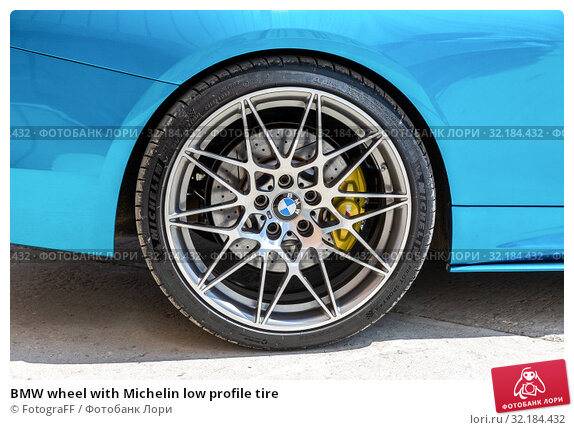
8R19
285/45R19 = 29.1x11.2R19
295/45R19 = 29.5x11.6R19
Low Profile Tire Sizes for 20" Wheels
25" Tire Diameter
215/30R20 = 25.1X8.5R20
225/30R20 = 25.3x8.9R20
235/30R20 = 25.6x9.3R20
245/30R20 = 25.8x9.6R20
275/25R20 = 25.4X10.8R20
285/25R20 = 25.6x11.2R20
295/25R20 = 25.8x11.6R20
26" Tire Diameter
225/35R20 = 26.2x8.9R20
235/35R20 = 26.5x9.3R20
245/35R20 = 26.8x9.6R20
255/30R20 = 26x10R20
265/30R20 = 26.3x10.4R20
275/30R20 = 26.5x10.8R20
285/30R20 = 26.7x11.2R20
305/25R20 = 26x12R20
315/25R20 = 26.2x12.4R20
325/25R20 = 26.4x12.8R20
335/25R20 = 26.6x13.2R20
345/25R20 = 26.8X13.6R20
27" Tire Diameter
195/50R20 = 27.7x7.7R20
215/45R20 = 27.6x8.5R20
225/40R20 = 27.1X8.9R20
235/40R20 = 27.4x9.3R20
245/40R20 = 27.7x9.6R20
255/35R20 = 27x10R20
265/35R20 = 27.3x10.4R20
275/35R20 = 27.6x10.8R20
285/35R20 = 27.9x11.2R20
295/30R20 = 27x11.
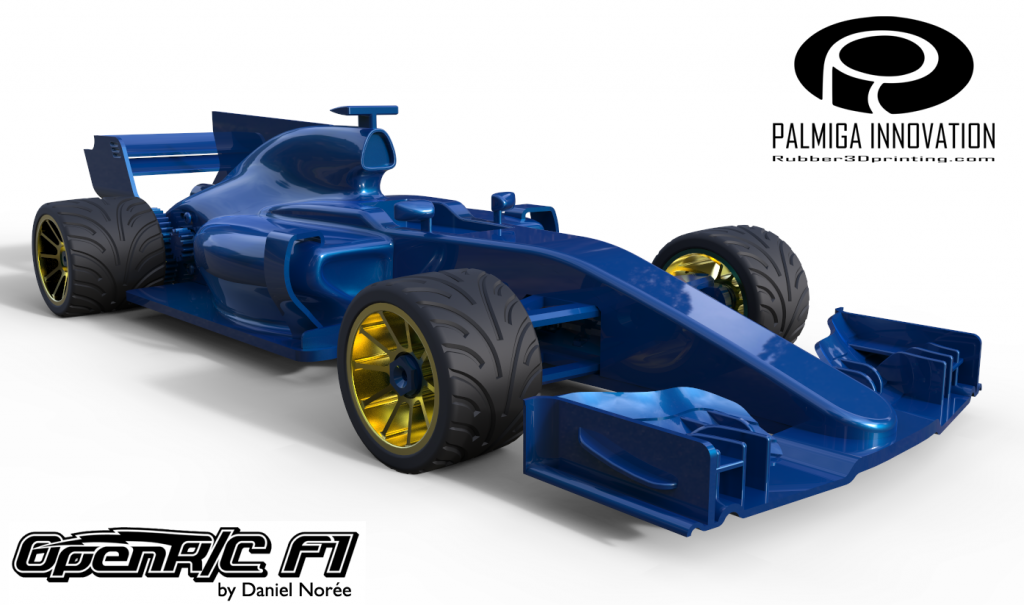
6R20
305/30R20 = 27.2x12R20
315/30R20 = 27.4x12.4R20
325/30R20 = 27.7x12.8R20
335/30R20 = 27.9x13.2R20
28" Tire Diameter
225/45R20 = 28X8.9R20
235/45R20 = 28.3x9.3R20
245/45R20 = 28.7x9.6R20
255/40R20 = 28x10R20
265/40R20 = 28.3x10.4R20
275/40R20 = 28.7x10.8R20
295/35R20 = 28.1x11.6R20
305/35R20 = 28.4x12R20
315/35R20 = 28.7x12.4R20
345/30R20 = 28.1x13.6R20
29" Tire Diameter
235/50R20 = 29.3X9.3R20
245/50R20 = 29.6x9.6R20
255/45R20 = 29x10R20
265/45R20 = 29.4x10.4R20
275/45R20 = 29.7x10.8R20
285/40R20 = 29x11.2R20
295/40R20 = 29.3x11.6R20
325/35R20 = 29X12.8R20
30" Tire Diameter
255/50R20 = 30x10R20
265/50R20 = 30.4x10.4R20
275/50R20 = 30.8x10.8R20
285/45R20 = 30.1X11.2R20
295/45R20 = 30.5x11.6R20
305/45R20 = 30.8x12R20
31" Tire Diameter
285/50R20 = 31.2x11.2R20
295/50R20 = 31.6x11.6R20
31X18R20
32" Tire Diameter
305/50R20 = 32x12R20
315/50R20 = 32.
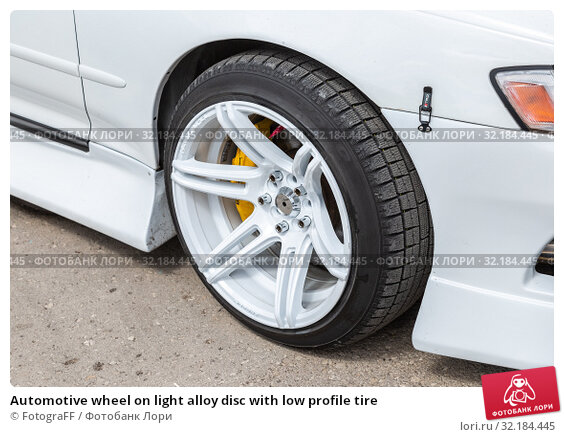
4x12.4R20
325/50R20 = 32.8x12.8R20
33" Tire Diameter
33X13.5R20
34" Tire Diameter
355/50R20 = 34X14R20
Low Profile Tire Sizes for 21" Wheels
26" Tire Diameter
245/30R21 = 26.8x9.6R21
295/25R21 = 26.8x11.6R21
27" Tire Diameter
245/35R21 = 27.8x9.6R21
255/30R21 = 27x10R21
265/30R21 = 27.3x10.4R21
275/30R21 = 27.5x10.8R21
285/30R21 = 27.7x11.2R21
305/25R21 = 27x12R21
325/25R21 = 27.4x12.8R21
28" Tire Diameter
245/40R21 = 28.7x9.6R21
255/35R21 = 28X10R21
265/35R21 = 28.3x10.4R21
275/35R21 = 28.6x10.8R21
285/35R21 = 28.9x11.2R21
295/30R21 = 28x11.6R21
305/30R21 = 28.2x12R21
315/30R21 = 28.4X12.4R21
325/30R21 = 28.7x12.8R21
355/25R21 = 28x14R21
29" Tire Diameter
255/40R21 = 29X10R21
265/40R21 = 29.3x10.4R21
275/40R21 = 29.7x10.8R21
295/35R21 = 29.1x11.6R21
305/35R21 = 29.4X12R21
30" Tire Diameter
265/45R21 = 30.
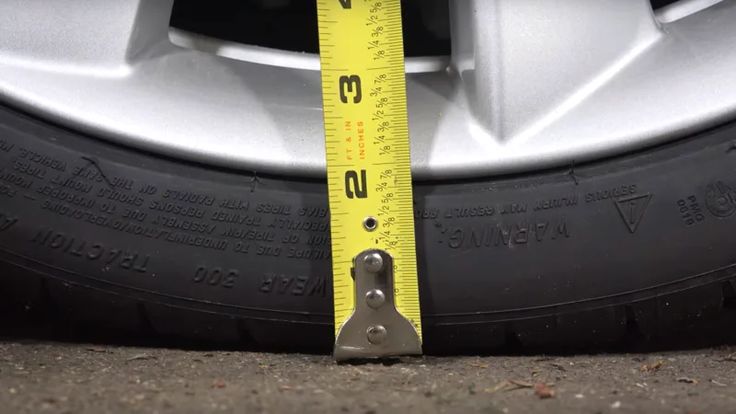
4x10.4R21
275/45R21 = 30.7x10.8R21
285/40R21 = 30X11.2R21
295/40R21 = 30.3x11.6R21
315/40R21 = 30.9X12.4R21
31" Tire Diameter
255/50R21 = 31x10R21
275/50R21 = 31.8X10.8R21
285/45R21 = 31.1x11.2R21
325/40R21 = 31.2X12.8R21
Low Profile Tire Sizes for 22" Wheels
27" Tire Diameter
235/30R22 = 27.6x9.3R22
245/30R22 = 27.8x9.6R22
275/25R22 = 27.4x10.8R22
285/25R22 = 27.6x11.2R22
295/25R22 = 27.8x11.6R22
28" Tire Diameter
255/30R22 = 28x10R22
265/30R22 = 28.3x10.4R22
275/30R22 = 28.5X10.8R22
285/30R22 = 28.7x11.2R22
305/25R22 = 28x12R22
315/25R22 = 28.2x12.4R22
335/25R22 = 28.6x13.2R22
29" Tire Diameter
255/35R22 = 29x10R22
265/35R22 = 29.3x10.4R22
275/35R22 = 29.6X10.8R22
285/35R22 = 29.9x11.2R22
295/30R22 = 29x11.6R22
305/30R22 = 29.2x12R22
315/30R22 = 29.4X12.4R22
30" Tire Diameter
255/40R22 = 30X10R22
265/40R22 = 30.

3x10.4R22
275/40R22 = 30.7x10.8R22
295/35R22 = 30.1X11.6R22
305/35R22 = 30.4X12R22
315/35R22 = 30.7X12.4R22
31" Tire Diameter
255/45R22 = 31X10R22
265/45R22 = 31.4X10.4R22
275/45R22 = 31.7x10.8R22
285/40R22 = 31x11.2R22
295/40R22 = 31.3x11.6R22
305/40R22 = 31.6x12R22
325/35R22 = 31X12.8R22
32" Tire Diameter
275/50R22 = 32.8x10.8R22
285/45R22 = 32.1x11.2R22
305/45R22 = 32.8x12R22
33" Tire Diameter
285/50R22 = 33.2x11.2R22
33X12.5R22
33X14.5R22
355/40R22 = 33.2X14R22
34" Tire Diameter
305/50R22 = 34x12R22
325/50R22 = 34.8x12.8R22
35" Tire Diameter
35X14.5R22
35X15.5R22
375/45R22 = 35.3X14.8R22
Low Profile Tire Sizes for 23" Wheels
28" Tire Diameter
265/25R23 = 28.2X10.4R23
30" Tire Diameter
285/35R23 = 30.9x11.2R23
325/30R23 = 30.7X12.8R23
31" Tire Diameter
275/40R23 = 31.

7X10.8R23
32" Tire Diameter
285/40R23 = 32x11.2R23
305/40R23 = 32.6x12R23
325/35R23 = 32X12.8R23
Low Profile Tire Sizes for 24" Wheels
29" Tire Diameter
275/25R24 = 29.4x10.8R24
30" Tire Diameter
255/30R24 = 30x10R24
275/30R24 = 30.5x10.8R24
285/30R24 = 30.7x11.2R24
31" Tire Diameter
285/35R24 = 31.9x11.2R24
295/30R24 = 31X11.6R24
32" Tire Diameter
295/35R24 = 32.1x11.6R24
305/35R24 = 32.4x12R24
315/35R24 = 32.7x12.4R24
405/25R24 = 32x15.9R24
33" Tire Diameter
285/40R24 = 33x11.2R24
295/40R24 = 33.3x11.6R24
34" Tire Diameter
385/35R24 = 34.6x15.2R24
35" Tire Diameter
325/45R24 = 35.5x12.8R24
35X12.5R24
35X13.5R24
375/40R24 = 35.8X14.8R24
36" Tire Diameter
315/50R24 = 36.4X12.4R24
37" Tire Diameter
37X13.5R24
37X14.5R24
38" Tire Diameter
38X14R24
38X15.
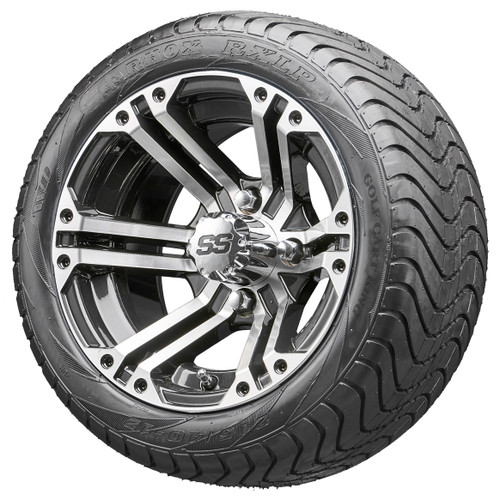
5R24
Low Profile Tire Sizes for 26" Wheels
31" Tire Diameter
275/25R26 = 31.4x10.8R26
295/25R26 = 31.8x11.6R26
33" Tire Diameter
295/30R26 = 33x11.6R26
305/30R26 = 33.2x12R26
35" Tire Diameter
315/40R26 = 35.9x12.4R26
37" Tire Diameter
37X13.5R26
38" Tire Diameter
38X15.5R26
40" Tire Diameter
40X15.5R26
Low Profile Tire Sizes for 28" Wheels
33" Tire Diameter
295/25R28 = 33.8x11.6R28
37" Tire Diameter
325/35R28 = 37x12.8R28
40" Tire Diameter
40X15.5R28
42" Tire Diameter
42X15.5R28
Low Profile Tire Sizes for 30" Wheels
37" Tire Diameter
315/30R30 = 37.4x12.4R30
Low profile tires
Monday, June 27, 2016 11:00:00 Europe/Moscow
One of the latest fashion trends has been the focus on low profile tires. This is especially evident during the sale of summer tires.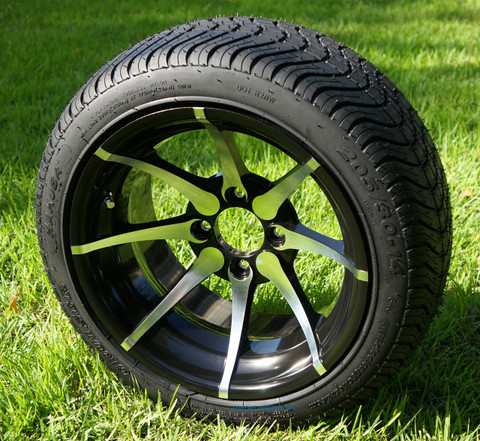 About how relates to the low-profile tire , what operating features it has, will be described below.
About how relates to the low-profile tire , what operating features it has, will be described below.
What is low profile tyre?
In today's world, a low profile tire is one that has a profile height (tire height) to width ratio of 55% or less. Thus, low profile tires include, for example, the following dimensions:
- 205/55 R16,
- 225/45 R17,
- 225/40 R18 etc.
Given the current trends in the development of tire sizes and the emergence of new cars, we can say that the 55th series, as the border between standard profile and low profile, will no longer be considered as such in the near future. In reality, this has already happened and among those who are deliberately looking for a tire with a narrow sidewall, the size 205/55 R16 is not considered low profile. And if we turn to history, then at the dawn of the appearance of low-profile tires, the parameter separating them from standard tires was generally 70%! And, for example, size 195/70 R14 was already considered low profile.
The first low profile tires were produced by Michelin in 1937. However, the condition of the roads and the equipment of mass-produced cars did not allow such tires to be widely used and they were installed exclusively on racing cars.
In the sports world, the idea of a low-profile tire was adopted almost immediately, as low-profile tires provide better vehicle stability during high-speed manoeuvres. At the same time, the use of such tires on conventional cars was abandoned for many decades and returned to it only in 1978 year.
Benefits
One of the main benefits of the low profile tires is that they give the car a more sporty appearance. The main difference from standard tires in behavior is the improvement in vehicle handling. So when cornering at high speed, there is almost no buildup of the car, which is characteristic of conventional tires, which occurs due to deformation of the sidewall of the tire under the influence of loads. The greater stability of the tire improves the handling of the car, and also increases the information content of the car as a whole. Also, a low-profile tire mounted on light-alloy wheels shows faster acceleration and also improves braking.
The greater stability of the tire improves the handling of the car, and also increases the information content of the car as a whole. Also, a low-profile tire mounted on light-alloy wheels shows faster acceleration and also improves braking.
Disadvantages
The disadvantages of this rubber are also related to its height. The lower the profile of the tire, the lower the tire sidewall height, which means the lower the damping ability of the tire to reduce vibrations from the road. As a result, all the bumps in the road are immediately felt on the steering wheel, because such low-profile tires are not suitable for roads with poor quality surfaces.
Lack of adequate cushioning can lead to even more unfortunate consequences than loss of comfort, since, for example, the load on the car's suspension is increased. It is also worth remembering that the transition to low-profile tires is always accompanied by an increase in the landing diameter of the disks, which means that you need to purchase a new set of disks.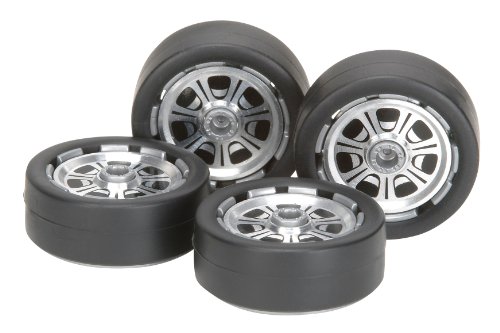 In addition, low-profile tires themselves tend to cost more.
In addition, low-profile tires themselves tend to cost more.
How to choose?
Select low profile tires according to the manufacturer's recommendations. As a rule, a car manufacturer offers 3-4 sizes for each model, among which there will be low-profile ones. The following is an example of tire selection for a Ford Focus:
| Recommended size | Tire profile | MICHELIN tire model |
| 205/55R16 | Standard | Primacy 3, Pilot Sport 3, CrossClimate |
| 215/55R16 | Standard | Primacy 3, CrossClimate |
| 215/50R17 | Low profile | Primacy 3, CrossClimate |
| 235/40R18 | Low profile | Pilot SPort 4, Pilot Sport Cup 2 |
Why low profile tires? — Useful articles on the company's website
Article reading time: 4 minutes
Bookmark this
Some people prefer classic tires with a standard profile, while others prefer narrow profile tires.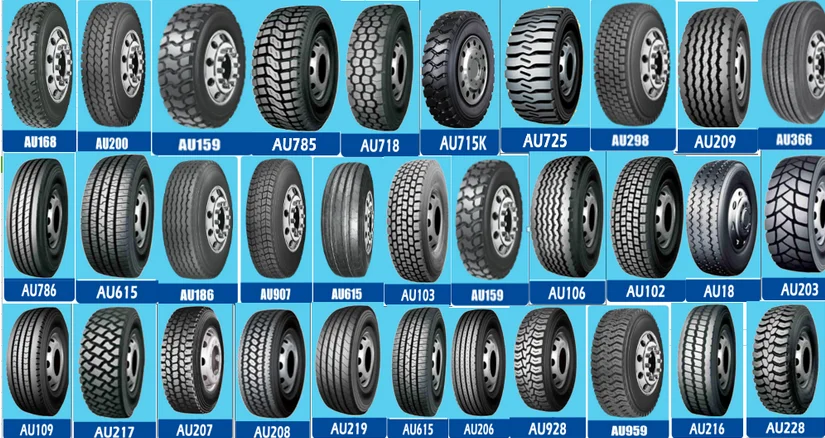 What justifies the choice of low profile rubber, what features does this type of tuning have, what advantages and disadvantages can be distinguished? We talk about all this in detail in the article.
What justifies the choice of low profile rubber, what features does this type of tuning have, what advantages and disadvantages can be distinguished? We talk about all this in detail in the article.
What is low profile tires
To determine whether a tire has a low or standard profile, it is necessary to measure three parameters - the height, the width of the profile, and the diameter of the disk itself. The complexity of the selection of tires lies in the fact that these parameters are interconnected. That is, by changing one value, it is necessary to adjust other values according to the manufacturer's recommendations.
The calculation formula is: Height/Width * 100%.
The values obtained show the relationship between the two quantities, but are not the absolute result of the calculations. That is, when choosing tires for an off-road vehicle, we can only say with certainty that the sidewall height of 205/55 R17 will be lower than that of 225/55 R17.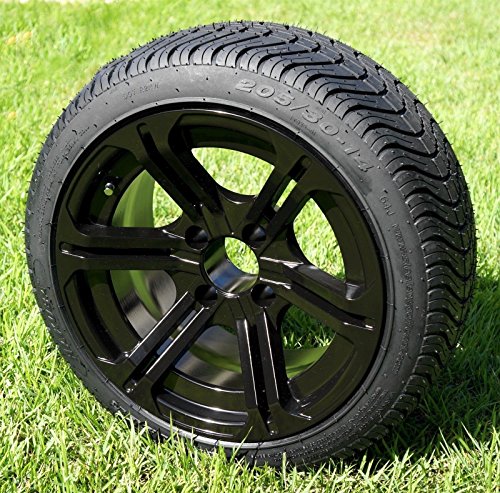
What is narrow profile tyre? This is a tire in which the height of the sidewalls, when measured from the roadway to the disk, has a minimum value in relation to the width.
Narrow profile tires differ even in appearance from classic tires. To find out the main parameters, you need to look at the side surface, where a special marking is applied. For example, consider the standard tire marking 205/55 R17:
- 205 - this value indicates the width of the rubber for the car;
- 55 - the percentage of the height and width of the tire. We already know what a tire profile means and how it is calculated. In our case, the height is 205 * 0.55 = 112.75 mm;
- R - indicates the type of automotive rubber, in our case - a radial tire;
- 17 Bore in inches.
Low profile tires have a height to width ratio of 0.55 or less. In the above example, the tire marking is already considered narrow-profile. It is allowed to lower the profile as much as possible to a ratio of height and width of 0. 2.
2.
Low-profile wheels also differ in the index of permissible speed. This value is indicated in the marking on the sidewall. If standard tires have a limit of 190 km / h, then narrow-profile tires - 210 km / h. In such tires, the presence of a stiffener is mandatory, which protects the car disk from deformation.
What narrow profile tires are used for
As a rule, such tires are installed on a car to improve sports performance. The car moves faster, improves dry grip. In addition, a narrow profile is used for tuning cars. If you want to change your car and highlight it from the same type of flow, then this is one of the possible solutions.
As for the proper operation of such rubber, drivers have a lot of questions. For example, what pressure should be in low profile tires? In many tire services, they simply do not know how to pump low-profile tires and, in order to be safe, they make tire pressures of 2.1-2.2 atm. As a result, the car drives on half-flat tires.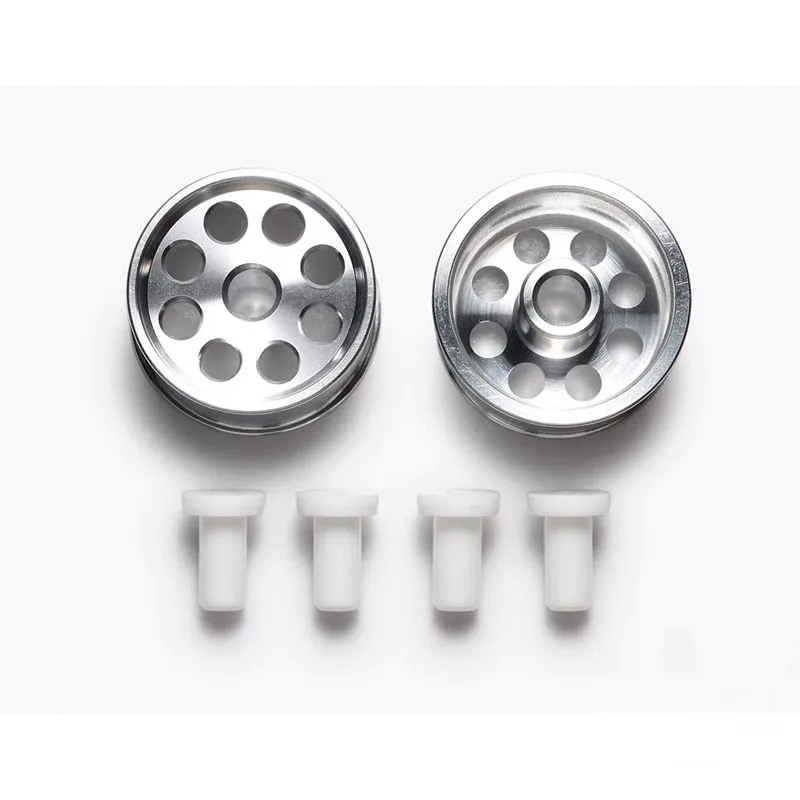
On average, it is recommended to pump at least 2.6 atm into tires for passenger cars. Depending on the parameters of the tire, the pressure of off-road tires can be 2.7-2.9atm.
Another common question is low-profile winter tires. Is it possible to use such rubber in winter or is it better to put the standard one? Winter tires differ from summer tires in the material of manufacture (softer), the presence of spikes, and the tread pattern. Accordingly, a narrow-profile tire is not suitable for driving in ice, heavy snow or on uneven and slippery roads. The wheels simply will not withstand the "surprises" of winter, and any unevenness will be given into the hands of the driver.
Low-profile off-road tires are on sale, and manufacturers also produce winter off-road tires. In any case, you should carefully consider the choice of such tires for operation in winter or in difficult road conditions.
Low profile tires
-
Summer Drive Protection Run On Flat
Rating:
4.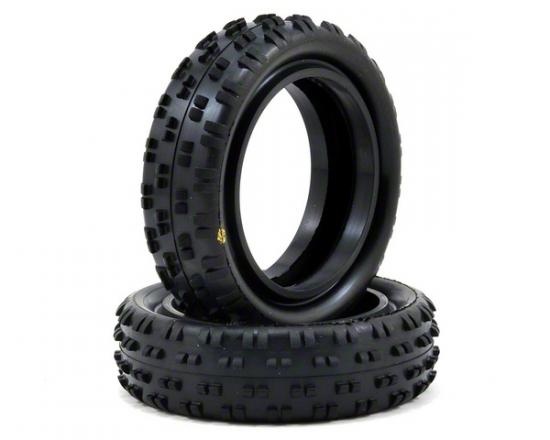 5
5
Tires Goodyear Eagle F1 Asymmetric
- Studs:
- no
- Diameter:
- 17 / 18 / 19 / 20
-
Summer Drive protection
Rating:
4.5
Tires Goodyear Eagle Sport TZ
- Studs:
- no
- Diameter:
- 16 / 17 / 18
-
Summer Drive Protection Run On Flat
Rating:
4.5
Tires Goodyear EfficientGrip Performance
- Studs:
- no
- Diameter:
- 15 / 16 / 17 / 18 / 19 / 20
-
Summer Drive protection
Rating:
5
Tires Goodyear EfficientGrip Performance 2
- Studs:
- no
- Diameter:
- 15 / 16 / 17 / 18 / 19 / 20
-
All season Drive Protection Run On Flat
Rating:
4.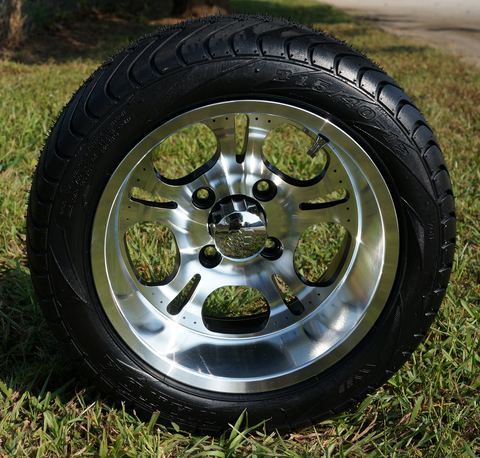 5
5
Tires Goodyear Vector 4Seasons Gen-2
- Studs:
- no
- Diameter:
- 15 / 16 / 17 / 18 / 19 / 20
-
All season Drive Protection Run On Flat
Rating:
4.5
Tires Goodyear Vector 4Seasons Gen-3
- Studs:
- no
- Diameter:
- 15 / 16 / 17 / 18 / 19 / 20
- novelty
Winter Drive protection
Tires Goodyear UltraGrip Arctic 2
- Studs:
- yes
- Diameter:
- 16 / 17 / 18 / 19
-
Winter Drive Protection Run On Flat Sound Comfort
Tires Goodyear UltraGrip Performance+
- Studs:
- no
- Diameter:
- 15 / 16 / 17 / 18 / 19 / 20 / 21 / 22
- novelty
Winter Drive protection
Tires Goodyear UltraGrip Ice 2+
- Studs:
- no
- Diameter:
- 17 / 19 / 20
Pluses and minuses
Consider a few of the main advantages of rubber with a narrow profile:
- best speed characteristics;
- fashionable tuning: another plus of tires is an improvement in the appearance of the car;
- traction with the road surface - increases the reliability of adhesion to the roadbed, relevant for a flat and dry track;
- increases the stability of the car on the road during maneuvers - the car does not shake when cornering, does not lead to the side;
- reduces the braking distance - the wheel is in better contact with the asphalt.
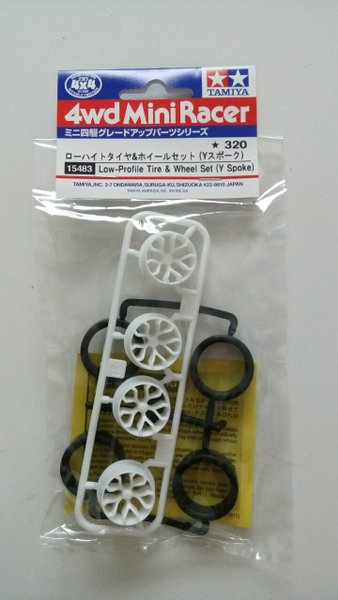
In addition to the advantages, tires with such a profile have a number of disadvantages. Consider the main ones:
- dependence on the quality of the road surface - if the road is uneven, all the advantages are leveled;
- short service life - also depends on the quality of the roadway; when driving on bumpy roads, such tires wear out faster;
- poor depreciation - all the bumps in the road are felt by the driver's hands;
- Poor Wet Stability - Soft, low profile tires don't offer good wet grip.
It is necessary to highlight such a minus - the complexity of installation. It is impossible to install tires on your own. At least special equipment is required, but not all workshops have it. Also, the tire design itself adds a “smut” when choosing wheels. Often, tires simply do not meet factory requirements.
We examined what a narrow profile tire is. We learned what it is used for, studied the features of operation in summer and winter, determined how much atmosphere should be pumped into the tire.
This is the ratio of the width of the tire to its height. Low-profile tires have a lower aspect ratio and shorter sidewall. Alternatively, regular tires have a higher aspect ratio and taller sidewall.
 Their increased width means that they can better grip the pavement and respond to cornering. Low-profile tires also tend to have bigger rims meaning that your vehicle can accommodate bigger brakes, allowing you to stop more quickly.
Their increased width means that they can better grip the pavement and respond to cornering. Low-profile tires also tend to have bigger rims meaning that your vehicle can accommodate bigger brakes, allowing you to stop more quickly. If your vehicle is not designed to accommodate these tires, you could be sacrificing its stability.
If your vehicle is not designed to accommodate these tires, you could be sacrificing its stability. Hitting a pothole with regular tires can be uncomfortable but hitting them a low-profile tire can cause significant damage from a bent rim to a punctured tire
Hitting a pothole with regular tires can be uncomfortable but hitting them a low-profile tire can cause significant damage from a bent rim to a punctured tire Most of us drive at controlled speeds or on highways that are built for high speeds in cars with regular tires. During our day-to-day lives, it’s unlikely that our commute involves sprawling stretches of beautifully paved roads.
Most of us drive at controlled speeds or on highways that are built for high speeds in cars with regular tires. During our day-to-day lives, it’s unlikely that our commute involves sprawling stretches of beautifully paved roads.
 9R15
9R15 3X7.3R16
3X7.3R16 1x8.9R17
1x8.9R17 2x8.9R18
2x8.9R18 7x10.8R18
7x10.8R18 7x9.6R19
7x9.6R19 8R19
8R19 6R20
6R20 4x12.4R20
4x12.4R20 4x10.4R21
4x10.4R21 3x10.4R22
3x10.4R22 7X10.8R23
7X10.8R23 5R24
5R24 About how relates to the low-profile tire , what operating features it has, will be described below.
About how relates to the low-profile tire , what operating features it has, will be described below. 
 The greater stability of the tire improves the handling of the car, and also increases the information content of the car as a whole. Also, a low-profile tire mounted on light-alloy wheels shows faster acceleration and also improves braking.
The greater stability of the tire improves the handling of the car, and also increases the information content of the car as a whole. Also, a low-profile tire mounted on light-alloy wheels shows faster acceleration and also improves braking.  In addition, low-profile tires themselves tend to cost more.
In addition, low-profile tires themselves tend to cost more.  What justifies the choice of low profile rubber, what features does this type of tuning have, what advantages and disadvantages can be distinguished? We talk about all this in detail in the article.
What justifies the choice of low profile rubber, what features does this type of tuning have, what advantages and disadvantages can be distinguished? We talk about all this in detail in the article. 
 2.
2. 
 5
5  5
5 
